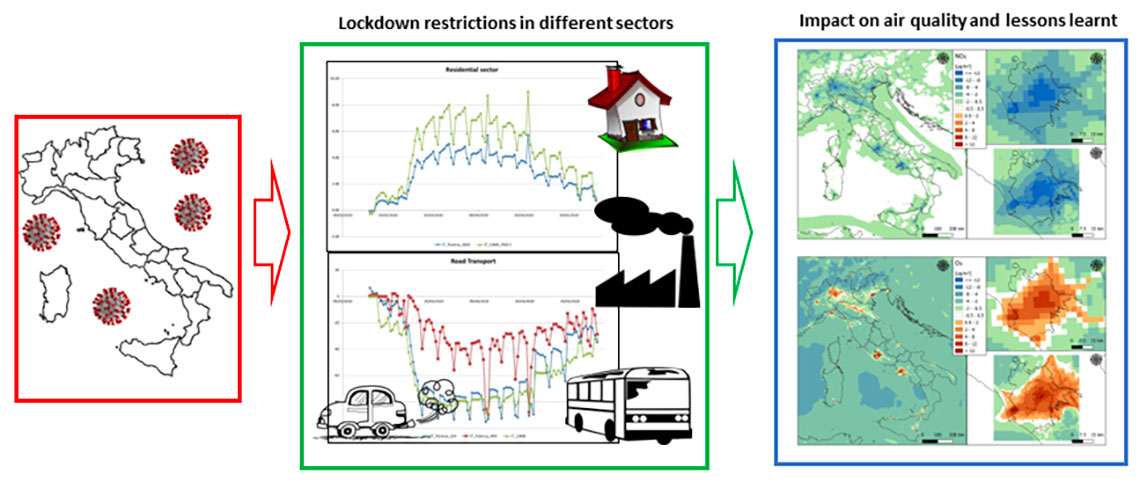Italian National Agency for New Technologies, Energy and Sustainable Economic Development

Environment: From the pandemic a 'lesson' for air pollution mitigation policies
Three years after the announcement of the first nationwide lockdown (9 March 2020), the ENEA study on its impact on air quality, with a focus on Rome, published in the journal Atmospheric Pollution Research, shows a significant air pollution reduction in Italy since the second half of March to April 2020, with daily peaks decreasing by 30%, and a following emission increase in May, when restrictions on people’s mobility and industrial activities were partially removed.
Overall, in the period under consideration (February-May 2020), the decline in emissions was primarily from sulfur oxides (-15%), nitrogen oxides (-11%), non-methane volatile organic compounds, (-10%) and carbon monoxide (-4%), while PM2.5 particulate matter dropped by just 2%, due to a greater use of wood and pellets in home heating. As regards PM10 particulate matter, April 2020 (the month in which the strictest lockdown measures were taken), showed a general reduction in concentrations, with a greater decrease recorded in the Po Valley (variables between -4 and -6 micrograms/m3). In the rest of the country the difference was much less pronounced, except in some large urban areas like Rome, where the drop in particulate matter reached an average of 2-4 micrograms/m3 with peak concentration reductions exceeding 6 micrograms/m3 in the city centre.
“These data confirm that measures to combat air pollution, to be more effective over time, in addition to transport and industry must address residential heating and agriculture, from regional up to national and European level”, explained Antonio Piersanti, head of the ENEA Laboratory of Atmospheric Pollution and co-author of the study.
Nitrogen oxide emissions decreased mainly in road transport (-22%), followed by the maritime sector (-20%), energy production (-16%) and aviation (-6%), while sulfur oxides dropped mostly in industrial activities (-25%).
The most substantial reduction in nitrogen dioxide concentrations (-12 micrograms per m3) was recorded in large urban areas such as Rome, Turin, Milan and Naples, along the main motorway axes and in the Po Valley, considered an air pollution hot-spot in Europe. “Those same urban areas showed increased ozone levels (+12 micrograms/m3), a gas hazardous to human health and vegetation, formed through the interaction of solar radiation with polluting gases including nitrogen oxides and volatile organic compounds; the latter represent a large family which includes the well-known benzene”, pointed out Massimo D'Isidoro, researcher at the ENEA Atmospheric Pollution Laboratory.
"On the other hand ammonia emissions, which play a significant role (precursor) in the formation of atmospheric particulate matter, showed no reduction since the agricultural sector (the main emitter) was one of the few not subjected to particularly restrictive measures", said Ilaria D'Elia, researcher at the ENEA Atmospheric Pollution Laboratory.
Air pollution is one of the greatest environmental risk to human health together with climate change. The World Health Organization accounts for an estimated 7 million premature deaths every year linked to air pollution and in September 2021 released revised air quality guidelines which recommend lower threshold values and which provide a framework in which formulate a directive on air quality under discussion in the EU.

